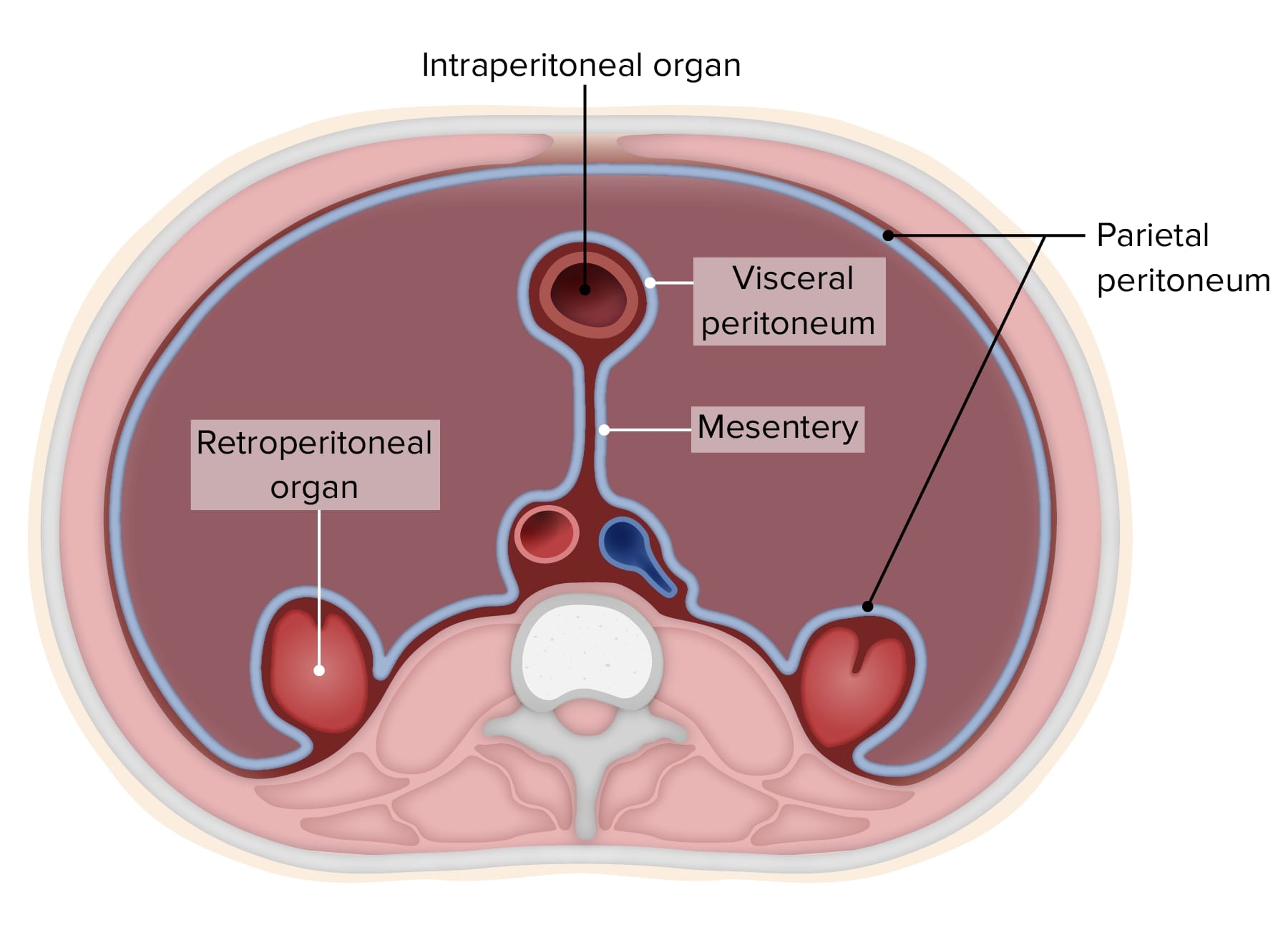Playlist
Show Playlist
Hide Playlist
Open Abdomen View of the Peritoneum
-
Slides Open Abdomen View of the Peritoneum.pdf
-
Reference List Anatomy.pdf
-
Download Lecture Overview
00:01 So now let's have a look at the peritoneum within the opened abdomen. So here we can see we've got the small intestines in the middle, the large intestine surrounding it. We've got part of the stomach and the liver sitting above. The anterior abdominal wall on its innermost layer is going to have parietal peritoneum covering it. Covering all of the small intestine and part of the large intestine is going to be that visceral peritoneum. The peritoneal cavity, remember, is that space between those 2 layers, the visceral peritoneum over the intestines and the parietal peritoneum, the innermost lining of the abdominal wall. And they can rub together and there are some fluid between them that help to prevent any friction. The greater omentum we can see here and now we can appreciate it coming down from the stomach running like an apron all the way down the abdomen and then curving back on itself to go to the posterior abdominal wall. 00:58 To mention the greater omentum briefly, it's quite an unknown organ, it's not really sure what it does, what's its purpose, it's very much embryological remnant. It does have some important lymphatic function to it and actually if there's an acute or minor inflammation, then the greater omentum can actually aggregate around the area and help to limit the spread by pumping in lots of white blood cells. It's very much a lymphatic organ. What we can see is a concept we haven't really spoken about before and that's the greater sac. 01:30 Essentially, the peritoneum is lining all of these organs and within it, there's this perotineal cavity like I've said. A portion of the peritoneal cavity that is very much inferior to the transverse colon is known as the greater sac and that's the large portion of abdomen that you see. If we have a greater sac, we also have a lesser sac and that is very much behind the lesser omentum so it's tucked behind the stomach and we'll explore that region in more detail now. Here we can see the stomach and we can see the duodenum coming at the pyloric aspect of the stomach. And we can see running from the stomach to the liver the hepatogastric ligament. Here we can see running from the duodenum to the liver the hepatoduodenal ligament. These 2 ligaments double layers of peritoneum from what's known as the lesser omentum that runs between the stomach, duodenum, and the liver. 02:30 It's an important protective membraneous layer that helps to hold these structures in position and importantly allows a root between the greater sac and the lesser sac by this little opening here which is the omental foramen. You can actually pass a finger from the greater sac. If your hands on the greater sac resting on the small intestines, you locate the lesser omentum. You can pass into the lesser sac by finding what's known as the free edge of the lesser omentum which is the hepatoduodenal ligament, that free edge where it stops. Partial finger underneath that free edge and enter the lesser sac by passing into the omental foramen. Free fluid can pass between these 2 sacs.
About the Lecture
The lecture Open Abdomen View of the Peritoneum by James Pickering, PhD is from the course Peritoneum and Peritoneal Cavity.
Included Quiz Questions
Which foramen does the greater sac use to communicate with the lesser sac?
- Epiploic (omental) foramen
- Foramen of Morgagni
- Foramen rotundum
- Foramen ovale
- Apical foramen
Customer reviews
5,0 of 5 stars
| 5 Stars |
|
5 |
| 4 Stars |
|
0 |
| 3 Stars |
|
0 |
| 2 Stars |
|
0 |
| 1 Star |
|
0 |




